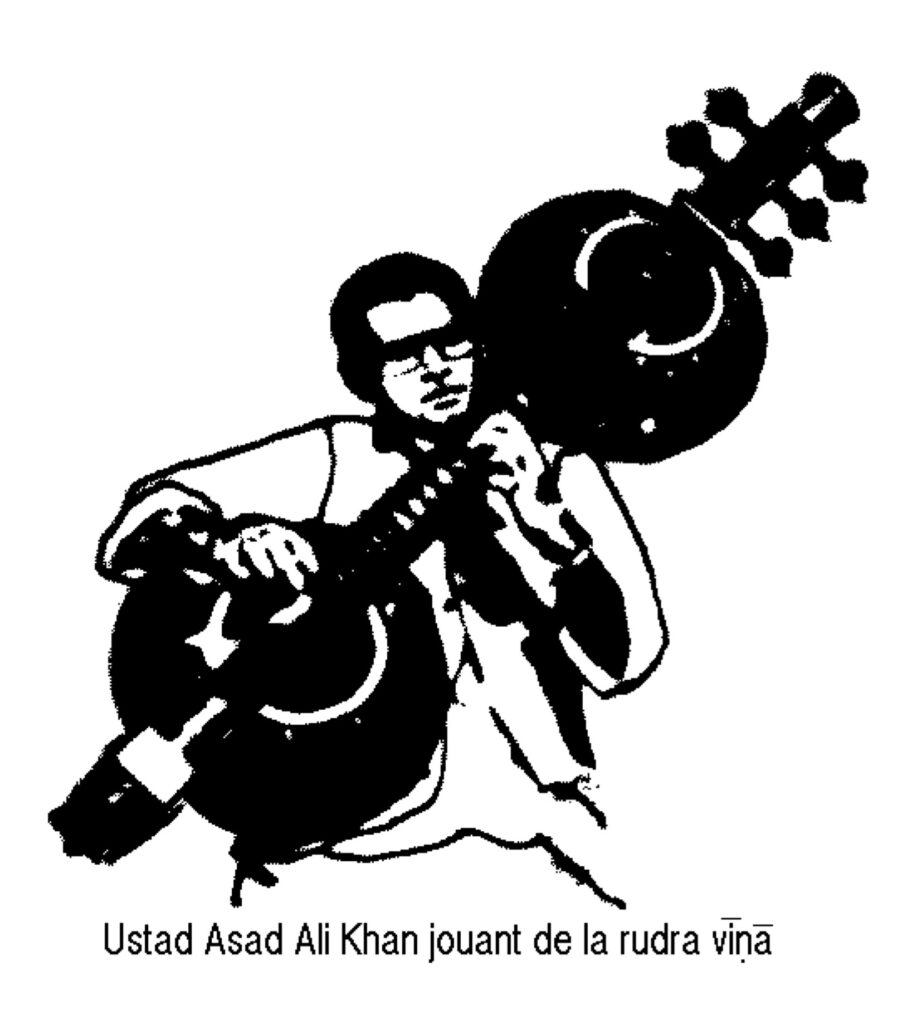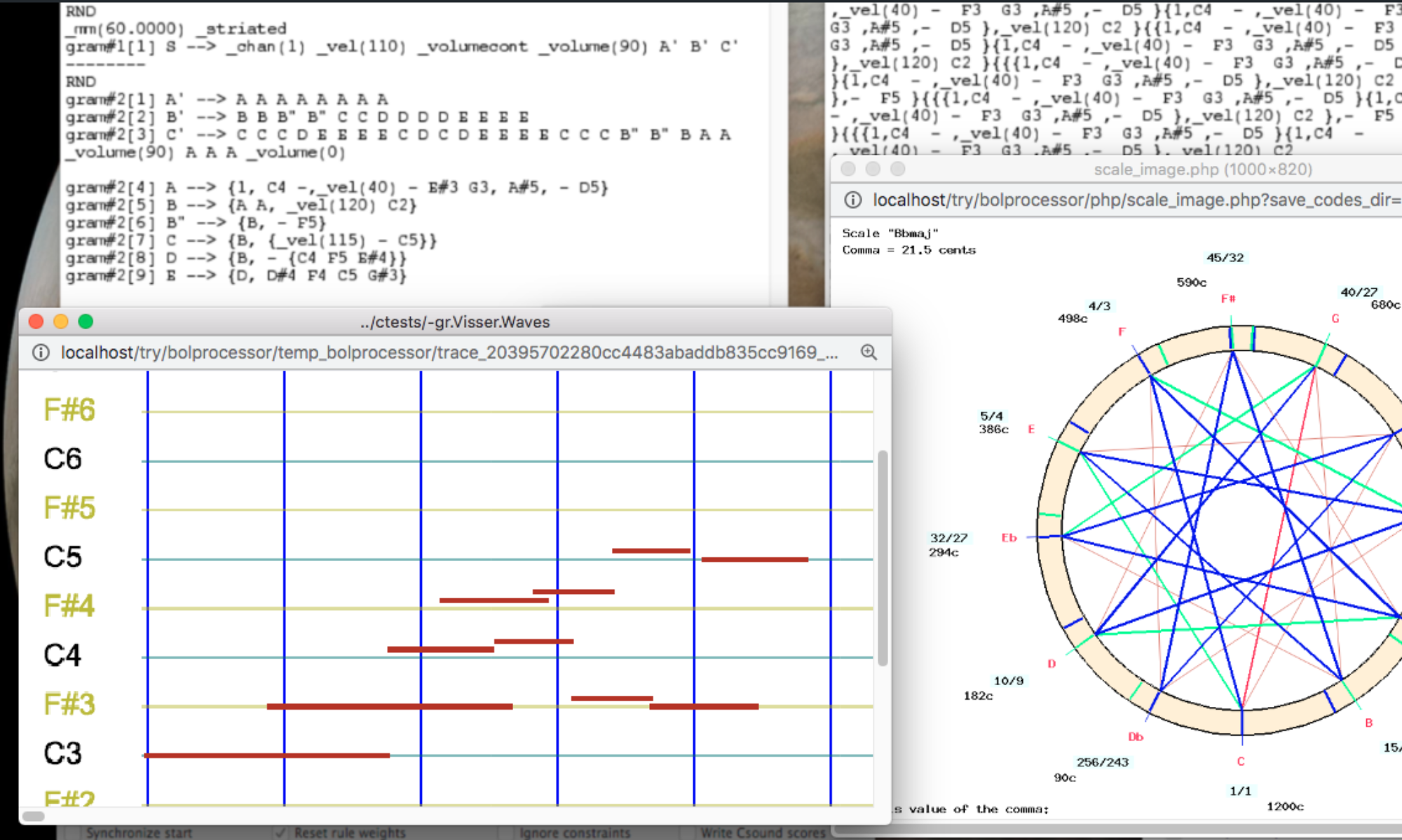Bernard Bel
Actes du colloque "Structures Musicales et Assistance Informatique" (1988). Marseille.
👉 Cited on page The two-vina experiment
Download an English translation
Résumé
Les difficultés de l'analyse acoustique de musiques extra-européennes proviennent souvent de catégorisations de phénomènes qui ne rendent pas compte des modèles explicites (ou implicites) sur lesquels s'articulent la création et la perception de structures musicales. Cet exposé définit la notion de modèle mélodique, élaborée et modifiée pendant neuf siècles en Inde pour rendre compte d'un phénomène mélodique particulier: le raga. Dans la deuxième partie sont présentés les outils et méthodes qui servent à caractériser l'intonation des ragas, ainsi qu'à réaliser leur transcription et leur classification automatiques.
Difficulties in analysing extra-European musics are often bound to categorisations of phenomena that do not take into account explicit (or implicit) models on which the creation and perception of musical structures are based. This paper defines the concept of melodic model, a concept elaborated and transformed for nine centuries in India to underlie a particular melodic phenomenon: raga. In the second part, tools and methods are presented relating to raga intonation and their automatic transcription and classification.
Excerpts of an AI review of this paper (Claude AI, June 2025)
Summary

In "Rāga : approches conceptuelles et expérimentales," the author discusses the conceptual history, theoretical foundations, and experimental investigations of the rāga system in North Indian classical music. The first part of the paper traces the evolution of rāga-related concepts from ancient Sanskrit treatises (notably the Dattilam and the Nāṭyaśāstra) to more recent perspectives that emphasize melodic modes (mela), specific tonal centers (toniques), and the interplay between theory and practice. The author highlights how notions like grāma, mūrcchanā, and jāti have shifted over the centuries, culminating in various attempts to classify rāgas by scales (ṭhāṭa or mela), melodic phrases (aṅga), and aspects of performance practice, including the ideal hour of rendition.
The second part of the paper presents technological and analytical methods used by the author to study raga intonation and structure. The author describes experimental devices, including custom-built pitch extractors and the Melodic Movement Analyser (MMA), to capture and visualize pitch contours (melograms), produce histograms (tonagrams) of pitch distribution, and explore microtonal aspects of raga execution. Additionally, the paper delves into automated transcription methods (sargam notation) and preliminary approaches for automatic classification of ragas, leveraging pitch-based similarity measures. By systematically comparing theoretical predictions with actual performance data, the paper proposes a richer understanding of how ragas are conceptualized and realized in practice.
Major Strengths
Comprehensive Historical Context
The author provides an extensive overview of the key developments and conceptual shifts in Indian music theory, from the gråma-based system of Bharata to modern ṭhāṭa and scale-based frameworks. This historical arc clarifies how philosophical, aesthetic, and practical considerations converge in raga performance.
Balanced Discussion of Theory and Practice
The paper effectively underscores the gap between theoretical ideals (e.g., 22 srutis, ancient modal structures) and the realities of contemporary performance practices (e.g., standardization, partial tempering, the emphasis on the bourdon). This dual approach helps illustrate the dynamic nature of raga music.
Technical Innovation in Experimentation
By devising hardware and software tools for real-time pitch extraction and by automating transcription, the author demonstrates a methodological framework that expands the possibilities for large-scale analysis of raga performances. The clear explanations of how these technologies work support their applicability and value.
Interdisciplinary Relevance
The paper bridges musicological inquiry, acoustical analysis, ethnomusicological context, and computational methods. This interdisciplinary scope situates the work as a notable contribution to scholarship on microtonal music, melodic classification, and cross-cultural cognition of musical scales.
Overall Observations
The paper offers a clear and methodically thorough account of both the theoretical underpinnings of raga music and the experimental means by which such theories can be tested against empirical performance data. The blending of historical musicology, acoustics, and informatics demonstrates a strong interdisciplinary approach. By synthesizing ancient treatises with modern computational tools, the work deepens our understanding of how ragas continue to thrive as vibrant, living musical entities while revealing the complexity of attempts at standardization and classification.
In sum, “Raga : approches conceptuelles et expérimentales” provides valuable technical insights and broadens our perspective on one of the most sophisticated melodic systems worldwide. Its fusion of musicological research, experimental data, and computational analysis stands out as a notable contribution to raga studies and to the broader field of ethnomusicology.
Skip to PDF content